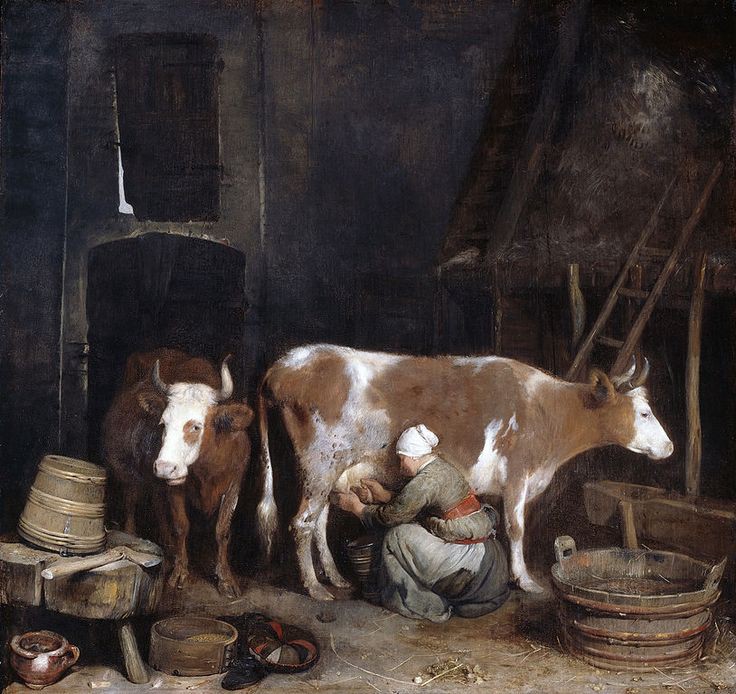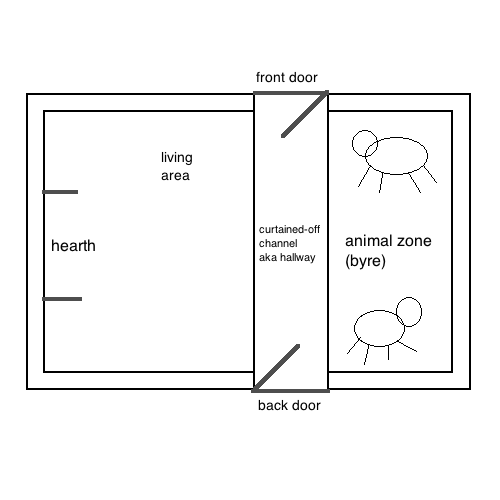Meet Me In My Byre Dwelling
BYO livestock

In northwestern Europe, from around the Bronze Age to the 1800s, it was very common for people’s houses to include an attached area for their larger livestock. Most civilians weren’t rich enough to have a team of cows, but let’s say your family had two cows, some sheep, and a couple chickens. Upper middle class! Without a herd to keep them warm, your livestock wouldn’t fare too well at night in the snow, so you’d allot a section of your house for barn activities and in turn, the animals would help your drafty rooms stay heated. This smelly, symbiotic environment was called a byre dwelling (or a barn house) and I for one am sold.
Byre Dwelling: An example from Co. Mayo of a family home occupied by both the family and their milking cows.
It applies all of the charm of hygge, but practically instead of commercially. Throw your fair isle turtleneck on the fire and get shearing, honey. Depending on your financial situation and how into design you were, there were a couple of ways to navigate the “my house is a barn” aesthetic. According to historians, many byre dwellings had a sunken groove down the center of the floor called a channel, so the cow excrement could slowly leak down the slope and out into the yard. During temperate times of the year, a family might put up a curtain to divide their space from the others, but on a snowy day like the one we’re having in New York, you’d probably opt for a more open floor plan so that everyone’s body heat could circulate.
The animals would hang out, tethered and calm, and while there doesn’t seem to be a fair use picture of a byre interior for me, here is my artist’s rendering:

Eventually the byre fell out of favor, though. Apparently some parts of Europe got too cool for roommates. “Colonial British commentators were generally horrified at the Irish tradition of living under the same roof as livestock,” historian Marion McGarry explains. “Citing it as yet more evidence that the Irish were savage and incapable of self-governance.” Rude. Isn’t it possible, instead, haters, that the peasants were just extremely good at cohabitating?
Eventually, exterior byres became the norm and “the former byres were partitioned with a wall, given a window and converted into a bedroom.” And just like that, our animals were relegated to the yard and we were relegated to multi-bedroom dwellings. It’s like watching granite countertops recede and marble countertops move in—only a matter of time until we run out of ideas and circle back around on this, right?
